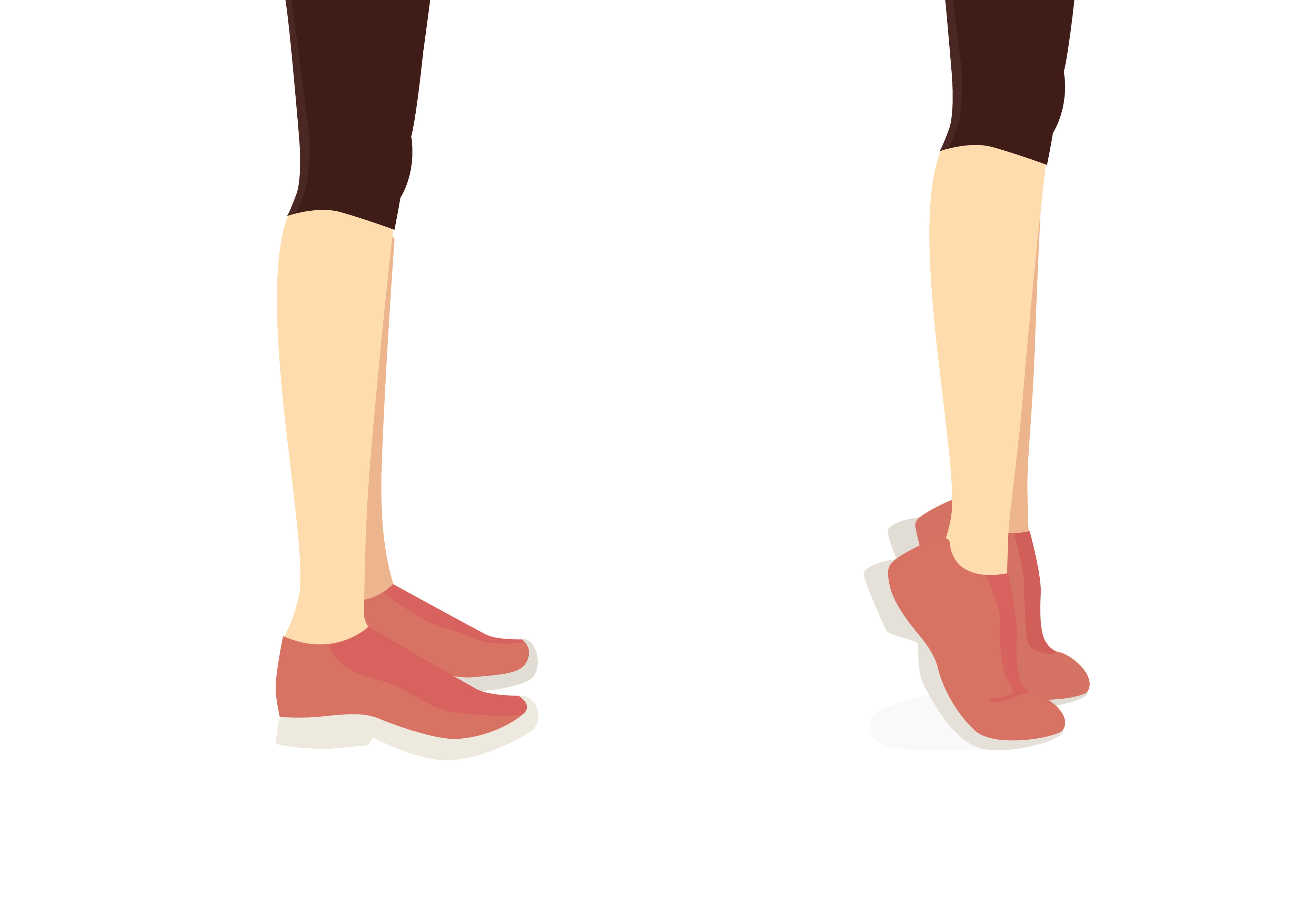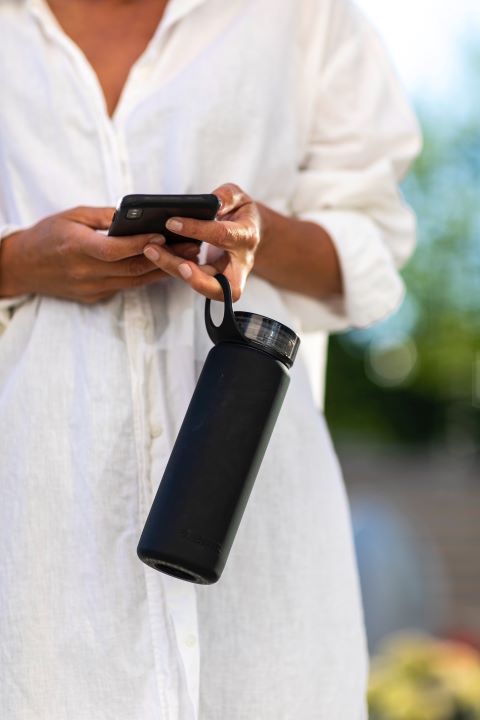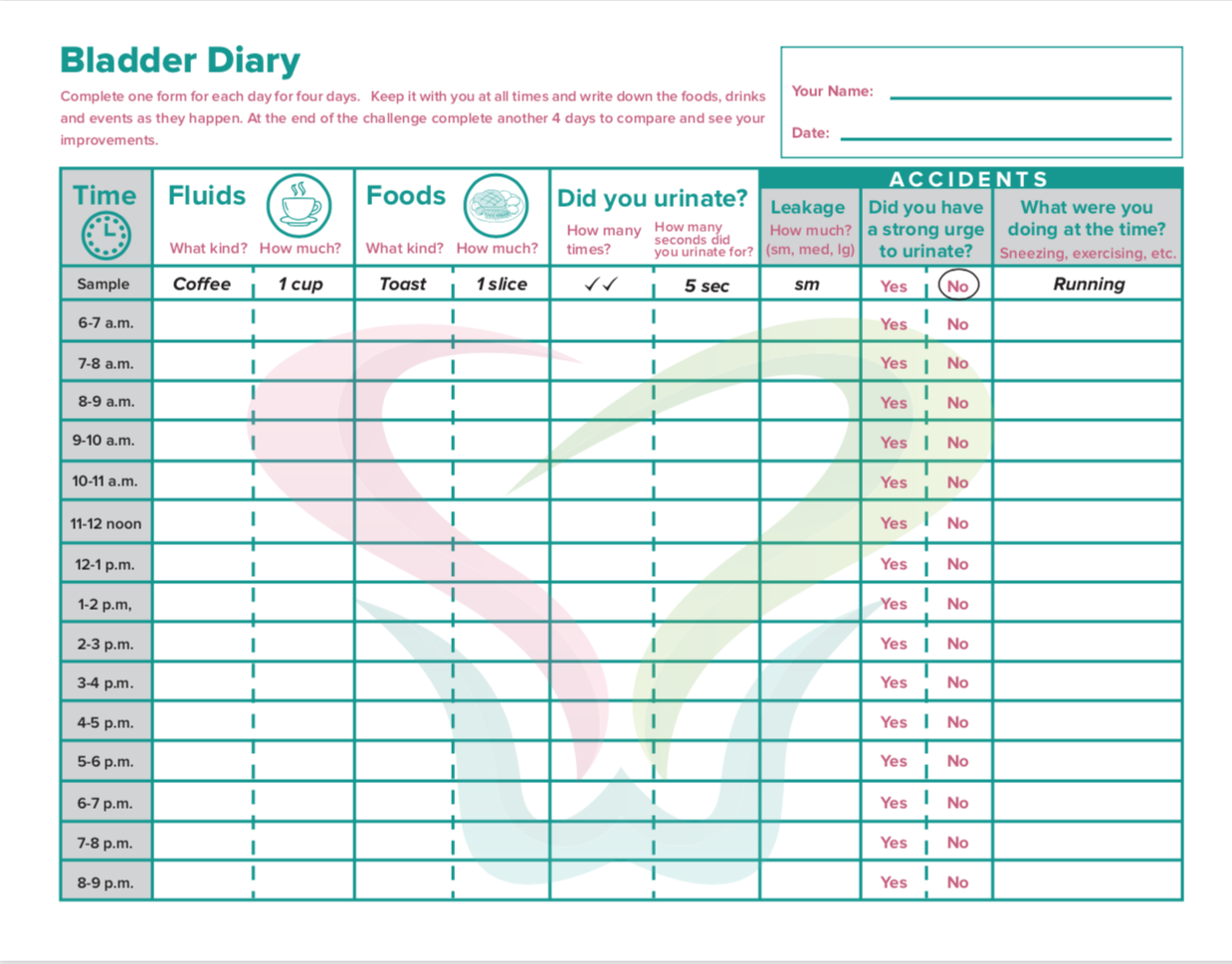How To Stop Overactive Bladder - Help for Urgency, Frequency and Leaks!
Jul 08, 2021Do you ever find yourself searching for bathrooms everywhere you go, or do you find that you have overwhelming urges that sometimes mean you can't make it to the bathroom in time? Maybe you have little bits of urine leaking out through the day, and you're always putting a pad in ‘just in case’. These are all signs of urinary incontinence and the good news is, there is lots of opportunity for improvement and elimination of these symptoms.
Planning your life around the bathroom and your bladder is interfering with you living your life fully. Here are my top tips to help you take back control so you can overcome those pesky leaks, those strong urges and the need to find a bathroom everywhere you go.
BLADDER DIARY
The first step in bladder retraining is to complete a bladder diary for 3-4 days.
In the bladder diary, you're going to record all of the food that you eat and all of the liquid that you drink. You're also going to note, when you have to go to the bathroom (the time). How long was your stream (in seconds)? Did you have any sensations of urgency or any leaking? What activity were you doing at the time?
BLADDER IRRITANTS
Once you have your bladder diary completed, the first thing you're going to do is look for some trends with regards to what you put in your body. These are going to help you point out some of the potential triggers in your foods that may be contributing to those sensations. Common bladder irritants are caffeine, alcohol, artificial sweeteners, acidic foods, even chocolate. There could also be some food sensitivities that you have that may contribute to some of the sensations as well, so you may also want to do some diet evaluation with a nutritionist and do some food sensitivity testing to see what may be aggravating your bladder. Once you have identified some of the more common triggers for you, you can then make decisions about whether you eliminate that food or drink, or if you want to reduce it.
BLADDER BEHAVIOURS
The next thing with your bladder diary, is to look for trends in habits and behaviours. So we looked at potentially triggering foods and beverages that could potentially irritate the bladder and contribute to it signalling you more often. We now want to look at some of the lifestyle or behaviour habits that you may have that could also be doing the same thing. Things like peeing ‘just in case’. Do you notice that you pee every time you leave the house or perhaps pee before the start of every exercise class or maybe even also during the class? Maybe you go pee 3, 4, 5, 6 times before you go to bed at night to completely empty your bladder in hopes that you won't have to wake up to go pee? Peeing ‘just in case’ trains the bladder to signal you more often. So once you've done that a few times, your bladder starts to identify being full before it is actually full. A full bladder is about 1.5 cups of liquid (urine). Get a set of measuring cups (that never make it into the kitchen) and measure how much urine comes out when you pee. If it's about a cup and a half, then you could consider that a full bladder. I often hear from people “I feel like I need to go but then only a little bit comes out”. You can also measure in time. A full bladder would be about 10-15 seconds of a steady stream. Anything less than that, you don't actually have to go.
HOW MANY TIMES A DAY SHOULD I PEE?
Normal avoiding is every two and a half to four hours which is about 5-9 times a day and ideally not nighttime waking. We can use the bladder diary to point out when we might be experiencing those signals and maybe even responding to them when in actual fact the bladder is not full and simply needs to be retrained to stop signalling you so often.
BLADDER RETRAINING
This might sound strange, but part of bladder retraining involves talking to your bladder. Now, this can be done in your head or you can talk out loud . When you're using your bladder diary and know that two and a half to four hours is the normal window if you experience a sensation or urge to have to go to the bathroom, you can look at our bladder diary and say, well, I just went 45 minutes ago, I haven't had any bladder irritants, and I haven't had a large volume of liquid, So I don't have a full bladder. What you're going to do is say, ‘bladder, I know you're not full. We just went to the bathroom 45 minutes ago. I haven't had any irritants.
I haven't had a huge volume of liquid. I know that in the past, I have contributed to getting you to signal me more often, but I'm going to take back control and get to that window of two and a half to four hours.’ Again, it might seem a little bit odd, but it can be really helpful and put you back in control.
DISTRACT YOUR BLADDER
Another thing you can do while you are retraining your bladder and talking to your bladder is to use some distraction measures. One common distraction measure is to curl your toes. As you are talking to your bladder and trying to overcome that urge, (the bladder signal will last about 15 to 30 seconds). talk to your bladder and curl your toes under. This interrupts the signalling up to the bladder and can also be a distraction measure that can help calm that sensation.
Another distraction measure would be calf raises. Talk to your bladder and go up and down onto your toes.
A final distraction measure is Kegel exercises. Kegels are a contract, lift and let go of the pelvic floor muscles. Some people like to contract, lift, and hold, or you can do quick contracts/releases while you are talking to your bladder. You could even do that while you are doing calf raises or toe curls.
It is even more powerful if you do this in front of a toilet. When you get the urge, you can walk into the bathroom and look at the toilet. Talk to your bladder, use your distraction techniques and wait for the signal to subside. Then walk away like the bladder boss you are!

START AT HOME
I advise you to start bladder training at home for the first few days, maybe even up to a week You may experience some very strong, potentially overwhelming sensations, and you may not be able to control the release of the bladder for those first few days, but stick with it. It will get better.
STAY HYDRATED
Another tip for when you are retraining, your bladder is to ensure you are drinking enough water. A common tactic that people use when they are leaking, or when they are afraid that they're not going to be able to make it to a bathroom in time is to restrict their fluids. While that may seem logical, it actually concentrates the urine and then irritates the bladder and therefore the bladder will signal you to get the urine out of the body. You want to be drinking clear water throughout the day. You can have other beverages as well, but you want to aim for between two and three liters of clear fresh water spread throughout the day. Pick a fave water bottle (mine is 1.25 litres) and fill it and empty it 3 times a day. Use a tracker app like MyFitnessPal to track your intake if that helps.

Photo by Bluewater Sweden on Unsplash
PELVIC FLOOR EXERCISE
A final tip as part of your bladder retraining is to strengthen your pelvic floor muscles. This can be done with Kegel exercises. Those are one form of pelvic floor exercise. I also recommend that you seek help and treatment from a pelvic floor physical therapist. They, in my opinion, are the gold standard in terms of learning how to do kegels, but they are also the best people to see to have your pelvic floor evaluated so that you know what types of pelvic floor exercise are best for you. When we have strong, supple, responsive muscles, they can better control those urges and they can also protect you from those leaks that sometimes happen with strong urges as well.
IT'S NEVER TOO LATE
Many women believe that because they have had this problem for years that there is no hope. With consistent attention to bladder retraining and a pelvic floor exercise program you CAN make change no matter your age or stage. Check out my program for Incontinence for further support.




